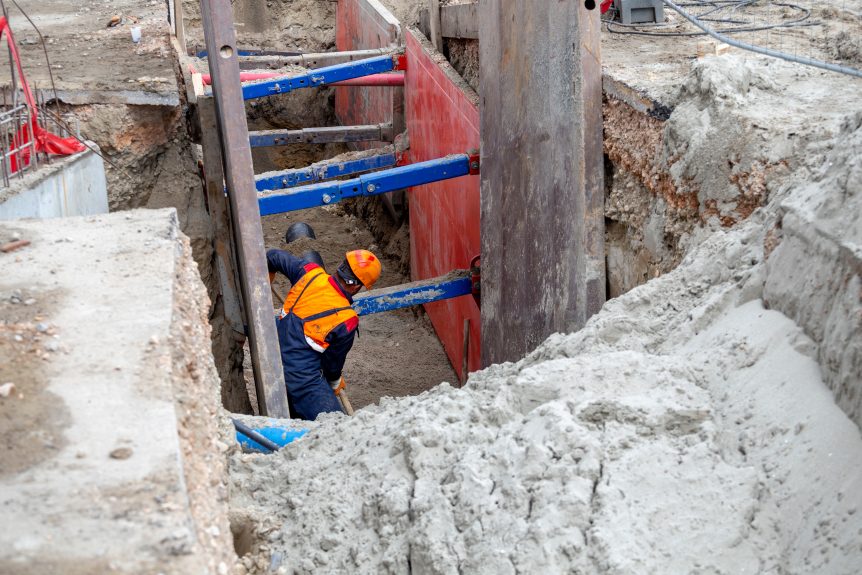Trenching safety is an essential part of any construction project. However, trenching is also one of the most hazardous activities that workers face on the job. Trenches are deep and narrow excavations that pose a significant risk of cave-ins, which can result in serious injury or death.
According to the US Department of Labor’s Occupational Safety and Health Administration (OSHA), the construction industry accounts for more than 80% of all trench-related fatalities in the United States. One of the main causes of these fatalities is the lack of a protective system, such as shoring, shields, or sloping, to prevent trench cave-ins.
Shoring, Trench Shields & Sloping
A protective system, such as shoring, trench shields, or sloping, is designed to prevent trench cave-ins and protect workers from being buried or crushed by soil or other materials.
Shoring involves installing a support system, such as hydraulic or mechanical props or beams, to prevent the trench walls from collapsing. Trench shields, also known as trench boxes, are steel or aluminum structures that provide a protective barrier between the workers and the trench walls, preventing soil from falling in. Sloping involves cutting back the trench walls at an angle to create a stable structure that is less likely to collapse.
OSHA Trenching Safety Requirements
The lack of a protective system is a leading cause of trench-related fatalities in the construction industry, as workers can be quickly buried or crushed by soil or other materials in the event of a cave-in. OSHA requires that trenches that are 5 feet deep or more have a protective system in place unless the excavation is made entirely in stable rock.
Employers are responsible for ensuring that trenching safety is implemented, and that workers are trained to recognize and avoid potential hazards when working in trenches. Failure to comply with OSHA regulations can result in citations and fines, as well as potential lawsuits if a worker is injured or killed due to a lack of proper safety measures.
Conclusion
In summary, the use of protective systems such as shoring, shields, or sloping is crucial in preventing trench-related fatalities in the construction industry. Employers must prioritize worker safety by implementing these systems and providing proper training to workers on how to use them effectively.

